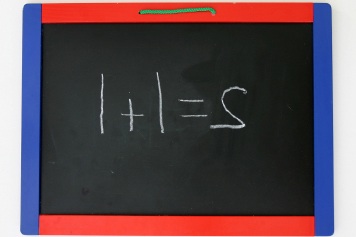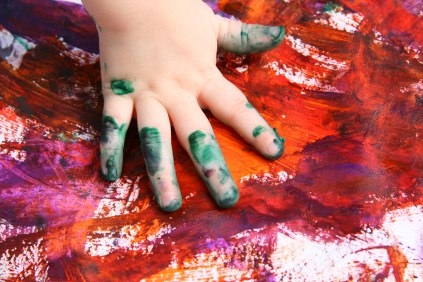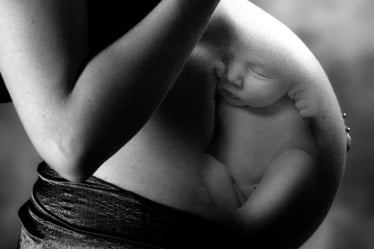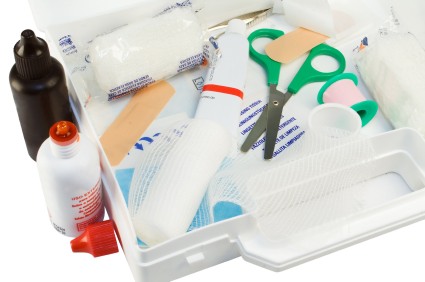Physical development
Your child’s growth rate reduces in the second year of life. Don’t get worried if her appetite also declines. She must have started walking by the first year, though this is not a hard and fast rule. Highly active, fearless infants tend to walk earlier; less active, more timid infants and those preoccupied with exploring objects in detail learn to walk late.
Early walking is not associated with advanced development in other milestones. So, don’t get hassled if your friend’s daughter has covered a milestone your daughter has not.
Initially, your child walks with a wide gait, bent knees and arms flexed at the elbow; the entire torso rotates with each stride. Her toes may point in or out and feet strike the floor flat. After several months of walking, her gait becomes more refined. Then her torso becomes stable, knees extended and arms swing on the sides to maintain balance. Her toes are better aligned and she is able to stop and stoop over without toppling. At around 18 months, your child sits on a small chair, walks up and down the stairs with help, and begins scribbling.
Cognitive development
Your child’s habit of exploring accelerates. This is in accordance with physical maturity of reaching, grasping and releasing reflexes. Since she can walk, she has more access to things around the house. She will begin imitating you in everything that she does and in fact, this is the easiest way to learn and enjoyable too. Now she will use her things for their intended purposes (combs for hair, cups for drinking instead of chewing on them.)
Emotional development
When your child starts with her first steps, she may be a little irritable. Once she has started walking, her predominant mood changes. Toddlers are said to be intoxicated with their new ability and power to control distance between themselves and people around them — moving away, looking back, moving farther and then returning with a reassuring touch.
Your child’s ability to explore things depends on her attachment to her. You can assess this by leaving her in an unfamiliar playroom. When you leave, she might stop playing, cry or try to follow you. Separation anxiety can be handled easily. She will come to you to be comforted and then return to play. But a child with ambivalent attachment will resist being comforted and may hit back in anger. Or she may protest when you leave her and may turn away from you on return.
Language development
Receptive language precedes expressive language. Your child is able to understand and comprehend remarks even before she starts speaking. By one year, she can understand several simple statements like ‘no’, ‘bye-bye.’ However, by 15 months, she can point to major body parts and use four to six words spontaneously and correctly. She also enjoys working on polysyllabic words. And, she will communicate most of her needs verbally.
Implications for parents
Usually parents tend to remember the milestones of their first child. Don’t get hassled if your second one’s milestones are different from the first. After your child starts walking, your child will need more supervision to avoid injuries. Her curiosity will lead her to electrical sockets, the dustbin or she will try to put things into her nose and ears.
Infants who become more distressed in their parents’ arms or who avoid their parents at times of stress may be insecurely attached. If your child turns to strangers for comfort when she is distressed rather than to you, you have to do something about it. Speak to your paediatrician.
Development from 18 months to 2 years
Physical development
Your child’s physical development reduces even further at this age. And she will be a bundle of energy now. She will learn to balance herself better and become more agile. She will run a lot, walk up and down the stairs one step at a time. This activity probably needs most supervision since the child will insist on being independent. She can also open doors, climb on to furniture and play relatively independently.
Cognitive development
At approximately 18 months, your child becomes aware of things that cannot be seen too. She anticipates what is kept where and where it may have been moved to, even though the object was not visible while it was being moved. She is able to comprehend cause and effect. She will use a stick or a ruler to bring something closer. She may not necessary move to get the toy. She will also become possessive about ‘her’ things, like a doll for instance. And her relationship with the doll will become stronger as she begins mothering it. You may find her feeding the doll with a cup or a bottle. She will also learn to undress and listen to stories with pictures.
Emotional development
At around 18 months, your child will develop an increased affinity to you. She will prefer to stay close to you all the time, fearing separation. Even putting her to bed might get difficult as she will be scared that you will leave her alone after she has gone off to sleep. You could try keeping a soft toy or a warm water bag wrapped in a towel next to her as a substitute for you.
This dummy remains important until your child can understand that you are around, even if you are not with her. This is also the time when your child becomes conscious of herself. By now, her sensory perceptions are quite refined. She learns about what she can touch and what she cannot [a hot object], or what she can eat and what she cannot [too cold, too hot or spicy food]. If her toy breaks, she will give it to you to mend it.
Linguistic development
The most interesting part of your child’s growth process is her language development. She will pick up words by hearsay and name objects without your conscious help. Her vocabulary will shoot up from 10-15 words at 18 months to 100 or more words at two years of age. After acquiring a vocabulary of about 50 words, she will begin to combine words to make sentences. Now she understands more than she can speak. You can try simple commands like making her fetch something or keep something in its place.
Implications for parents
Your child is much more agile now than ever before and it is not possible to limit his physical mobility. What you can do is make sure that you are around most of the time in order to avoid accidents. If your child is taking long to talk, don’t get worked up. It need not be a marker for delayed development. It is the overall development that has to be taken into consideration before reaching a conclusion on this issue. You can facilitate your child’s language development by using clear, simple sentences, asking questions and responding to her incomplete sentences. You could also use hard card books for the purpose.










